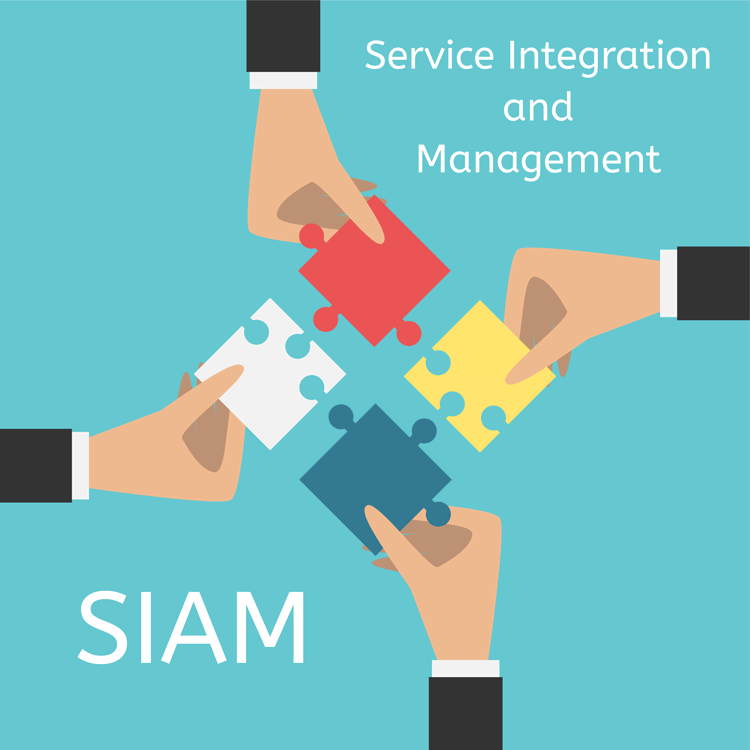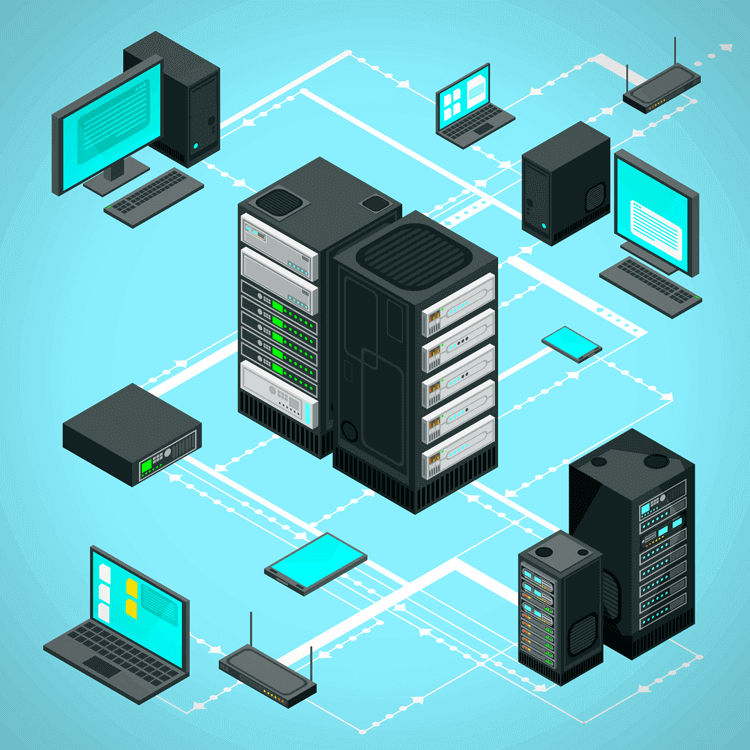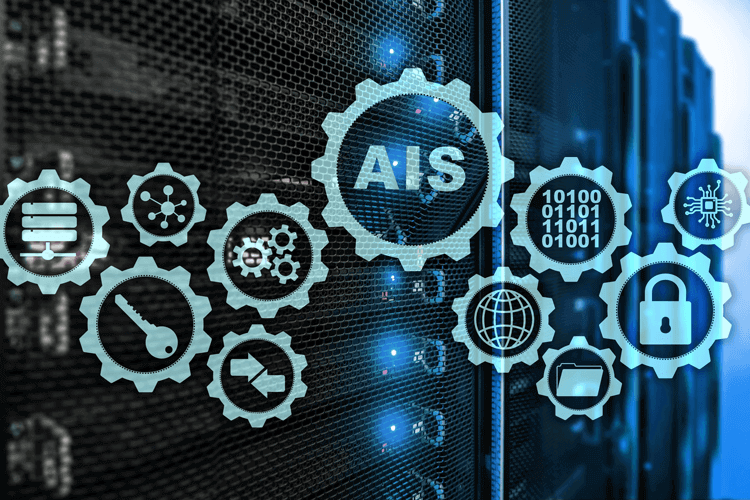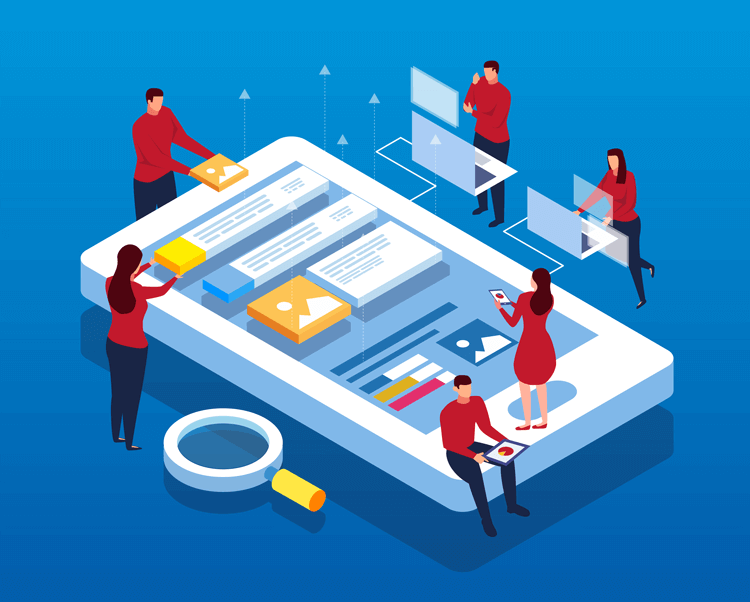What is Service Integration and Management? SIAM Made Easy
Service Integration and Management (SIAM) technology was created to optimize the critically-needed area of IT Service Management (ITSM). SIAM providers can manage all of IT's services while also ensuring they are using best practices in their services.

What is Service Integration and Management (SIAM)?
SIAM is a successful outsourcing service model designed to handle multiple IT service providers, whether in-house or outsourced. It can help:
- Improve existing processes by leveraging more than one supplier for different business operations
- Coordinate and integrate these services to deliver a seamless and efficient experience for the end users
- Strategize planning, budgeting, and prioritizing needs
The SIAM technology approach has been used by large organizations for many years but has seen more widespread adoption recently.
Key SIAM Benefits
There are key IT capabilities that SIAM can provide for your business:
- Better ability to define and adapt service governance: As a business scales up, it is inevitable that it will source multiple vendors and service providers for their business needs. SIAM ensures that the business can consolidate its IT services around common SIAM processes and procedures. This can be critical when it comes to responding to increased demand or unplanned events. It helps ensure continuity of core capabilities across multiple suppliers. SIAM also enables you to achieve compliance with industry best practices such as ISO's 27001 standards for Information Security Management Systems (ISMS).
- Improved customer service: SIAM will improve customer service by driving quality improvements in both internal and external service providers. This will enhance overall satisfaction levels among customers or business units who rely on those services. It even reduces time-to-market by allowing faster response times between teams and infrastructure operations groups within multiple organizations.
- Enhanced teamwork: Being part of a multi-sourcing organization's team means employees need to be able to work with different tools and information distribution methods. SIAM helps align the teams better for more seamless development and support processes.
- Clearer communication and understanding of services: IT services are required to manage business services end-to-end. This means every part of business practice must have IT services integrated in its actions. SIAM ensures that everything is on the same page and that employees have a better understanding of what services are available to them. Further, it helps provide insight into specific business needs, such as customer service levels set by management, how much time it takes before an issue escalates within teams, etc.
- Streamlined processes: SIAM also helps identify where improvements can be made, and which parts of the system need attention first.
How It Works: The SIAM Technology Approach
SIAM's core principle is better management through integration:
- SIAM will manage all the providers for an individual client so that they have only one point of contact for changes or issues.
- The SIAM professional knows what questions to ask to get good performance data while still maintaining confidentiality.
- SIAM also fosters a culture that encourages people across organizations to work together with common goals.
- SIAM is not only about resolving problems but rather making sure they never happen again. This is through continuous improvement initiatives.
- SIAM includes developing effective communication strategies between end-user customers, managers, project teams, SIAM professionals, SIAM providers etc., without imposing too much overhead or bureaucracy upon them.
How It Works in Practice: Example SIAM Scenarios
-
Multiple Service Providers
- Situation: An organization has outsourced various IT services to different providers, including infrastructure management, application development, and customer support.
- SIAM Implementation: SIAM establishes a service integration layer that acts as a central hub for managing interactions between these service providers. It defines clear processes, interfaces, and responsibilities for each provider. The goal is to ensure that all services work together cohesively to meet the organization's overall objectives.
-
Incident Management Across Providers
- Situation: A critical incident occurs that requires collaboration between the network service provider, application development team, and database management team.
- SIAM Implementation: SIAM provides a standardized incident management process that spans across multiple providers. It defines how incidents are reported, how information is shared, and how collaboration occurs to resolve the issue efficiently. This helps in avoiding delays and ensures a coordinated response.
-
Service Level Agreements (SLA) Management
- Situation: The organization has SLAs with different providers, and there is a need to monitor and enforce these agreements.
- SIAM Implementation: SIAM establishes a governance framework for SLA management. It includes regular performance monitoring, reporting mechanisms, and mechanisms for addressing SLA breaches. The organization can use this information to hold providers accountable and make data-driven decisions about the effectiveness of each service.
-
Change Management in a Dynamic Environment
- Situation: Business requirements changes are needed across various services provided by different vendors.
- SIAM Implementation: SIAM incorporates a flexible change management process that allows for quick adaptation to evolving business needs. It ensures that changes are communicated effectively across service providers, dependencies are managed, and the impact on overall service delivery is assessed and addressed.
-
Service Improvement Initiatives
- Situation: There is a need to continuously enhance the quality and efficiency of services.
- SIAM Implementation: SIAM fosters a culture of continuous improvement. It includes mechanisms for regularly reviewing service performance, gathering feedback, and identifying opportunities for enhancement. Service providers collaborate to implement improvements, ensuring that the overall services become more effective over time.
-
Centralized Reporting and Analytics
- Situation: The organization needs a comprehensive view of the performance of all its services.
- SIAM Implementation: SIAM establishes a centralized reporting and analytics function that collects and analyzes data from various service providers. This enables the organization to have an overall view of service performance, identify trends, and make informed decisions about optimizing their services.
SIAM Models
There are four SIAM models you can implement in your organization. Each model provides solutions based on the complexity of your IT integration needs and the in-house expertise your company already holds:
-
Internal Service Integrator (ISI)
This model ensures that most of the control over external service providers stays within your organization. This is done by sharing SIAM responsibilities with the internal IT staff.
-
External Service Integrator (ESI)
This model involves outsourcing SIAM management to an external SIAM provider or SIAM consultancy firm. This approach minimizes your organization's risk but also limits its control over suppliers and services provided. The needs of ESI are simple enough that most small-to-midsized companies can meet them through in-house expertise alone.
-
Hybrid Service Integrator (HSI)
The hybrid service integrator model works like a combination between ISI and ESI models, where ISIs provide basic SIAM functions under close supervision of the CIO office while HSIs handle complex issues with support from ISI experts when necessary.
-
Lead Supplies as Service Integrator
The last model is the SIAM model that is closest to outsourcing. This approach uses an IT services provider, SIAM consultancy firm or SIAM lean supplier as a single point of contact for all outsourced activities. A service integrator organization may also support this type of SIAM contract by providing guidance on managing multiple suppliers and coordinating actions with your company's business units.
The first three types (ISI, HSI & ESI) are generally less expensive than Lead Supplies because they rely on existing infrastructure such as employees and existing agreements.

Final Take: SIAM for Seamless Multi-Layered Service
When it comes to outsourcing, you have plenty of choices. One of the best possible solutions that will integrate seamlessly into your organization and maximize efficiency through better management is Service Integration and Management. SIAM has proven successful time and again in companies around the world because it combines all resources under a single umbrella while still allowing them to go about their daily business as usual. With the right SIAM model, it is possible to increase your productivity and customer service efficiency.





